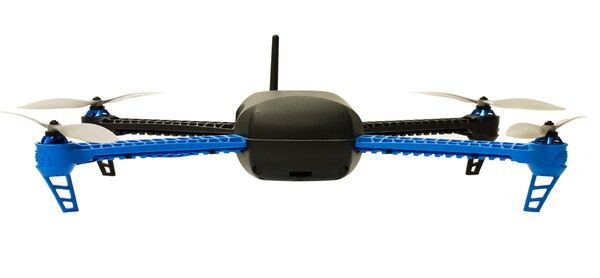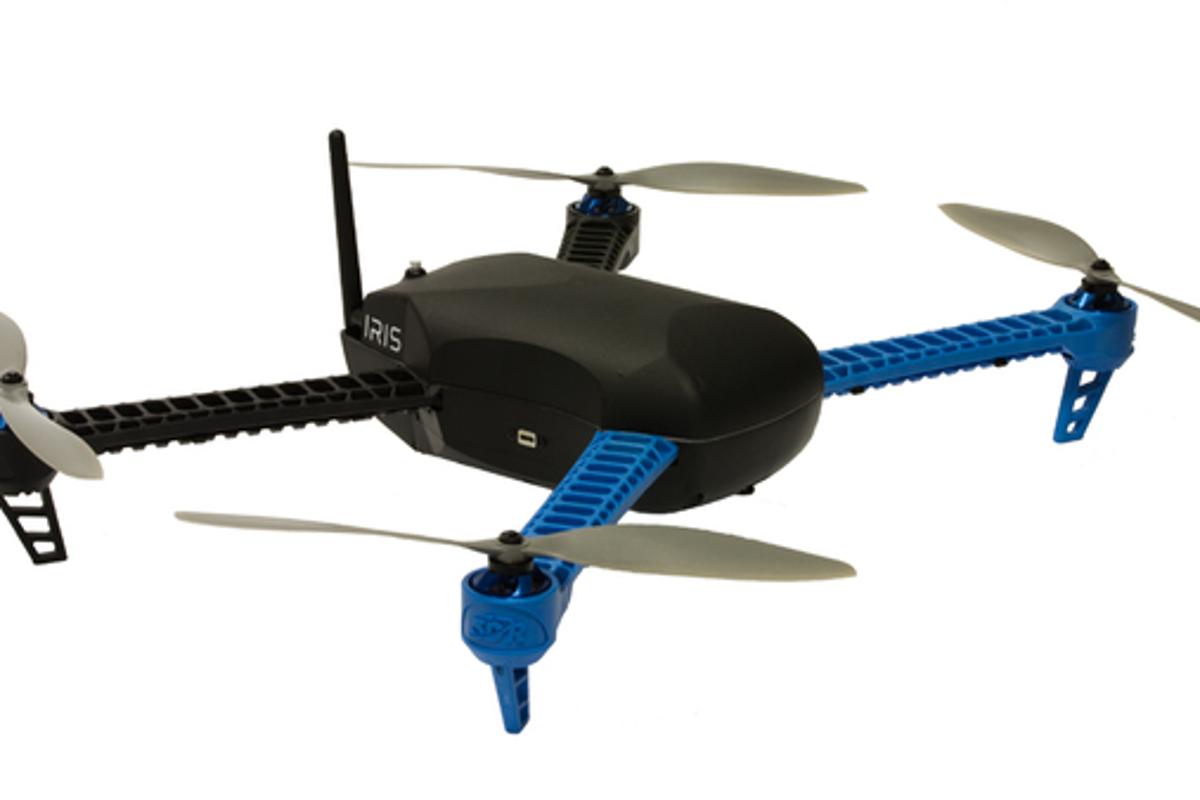Autonomous UAVs may be all the rage these days among professionals, but unfortunately a lot of the GPS-guided quadrotors on the market are a bit too complicated for the average consumer to control. 3D Robotics is aiming to inject a little more simplicity into the equation with its recently unveiled Iris. Billed as a ready-to-fly, fully-autonomous, user-friendly UAV, the Iris supports simple GPS controls through any computer, tablet, or smartphone.
The drone itself is fairly average in size, with a length of 55 cm (21.7 in) diagonally and a height of 10 cm (3.9 in). According to the developers, the main body is designed to be aerodynamic, durable, and lightweight, while still providing enough lift to carry a payload. The arms and feet are made from Zytel Nylon and are built to withstand impacts, but they can be cheaply replaced if needed. The motors and electronics are powered by an 11.1V 3.5Ah LiPo battery, which brings the quadcopter's total weight to 1282 grams (45.2 oz) when connected. On a full charge, the battery provides enough energy for around 9-14 minutes of flight time.
Aside from the typical manual controls with a transmitter, the Iris can be guided in a number of ways using a simple point-and-click program on a computer or smart device. A Cortex M4 processor handles the 32-bit autopilot along with a uBlox GPS unit with an integrated magnetometer. 3D Robotics spent more than four years and enlisted the help of over 40,000 volunteers to program and fine-tune the open source software that guides the Iris. The drone can be controlled on any device running Windows, OS X, Linux, or Android at the moment, with an iOS app planned for for the near-future.

Users can set up to 127 waypoints or, in the case of the mobile app, just draw a route on the screen to have the UAV follow a flight path using GPS coordinates. At any point during a flight, the Iris can be commanded to automatically take off, land, or return to its starting position. The software will keep track of its position in real-time and even keep a log of its movements. Alternatively, the program has a mode where the drone will follow its controller autonomously at a specific distance.
The program also allows for automatic failsafe commands, which will tell the quad what to do if it loses a signal or detects a low battery. Pilots will also have the option of setting up a virtual fence that will keep the Iris from wandering outside a pre-set boundary, regardless of what it's commanded to do.
The current model has a stable GoPro camera mount, which can be linked to the software for a live video feed. In the future, the developers plan to provide an autopilot-controlled gimbal, along with a range of different accessories, which will attach via a rail system already implemented into the arms.

3D Robotics is currently offering pre-orders of the Iris drone through its website, with the most basic package costing US$659.99. Customers can also customize their order with different add-ons, including a pre-programmed transmitter, extra battery, replacement parts, or a GoPro camera. Any pre-ordered drones are expected to ship on September 16.
If you're a beginner pilot though, you may want to hold off on ordering one for yourself just yet. The company has stated that this first batch of Iris quadcopters are intended for experienced users and developers who can lend some insight towards a more consumer-friendly model. As such, they may require some firmware upgrades and a few engineering tweaks over time. Stay tuned however, because 3D Robotics has promised the final version of the Iris will be released soon after.
Product page: 3D Robotics






